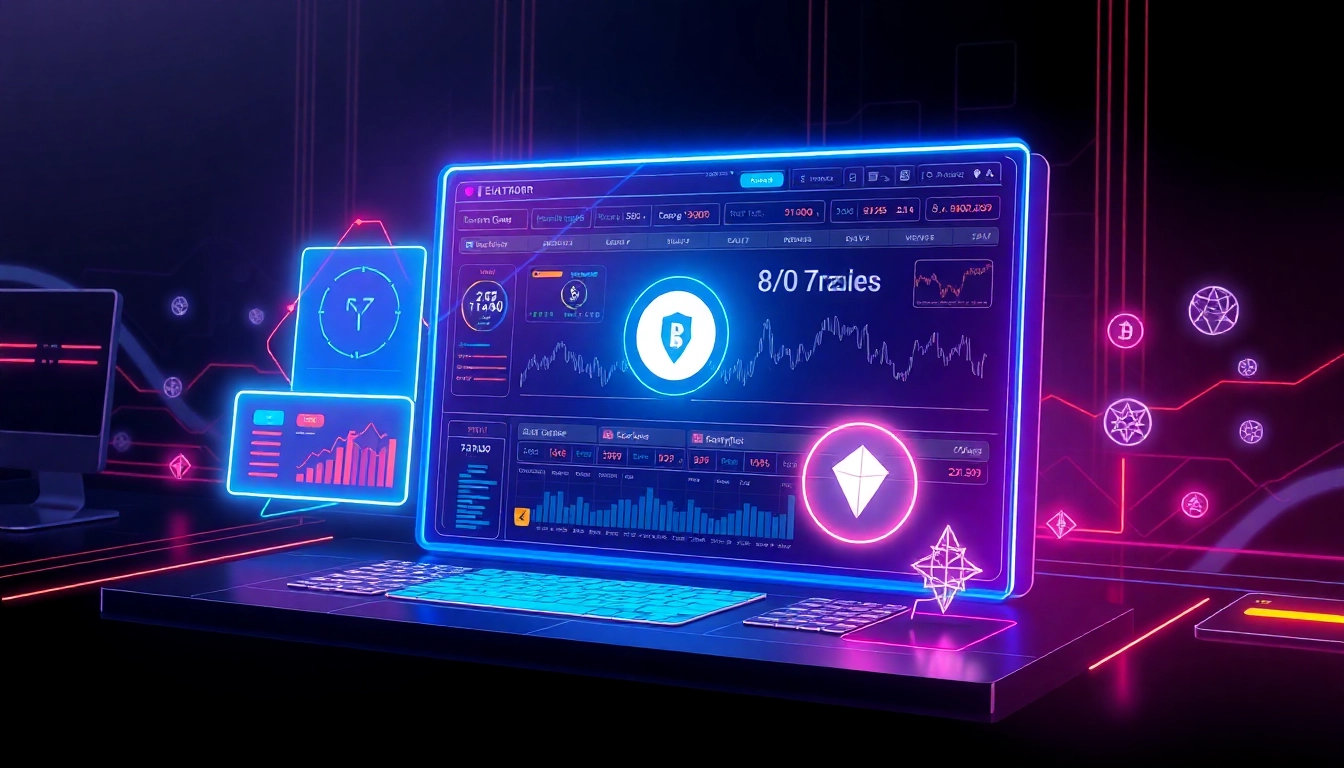Understanding the Recent Binance Futures Trading Outage
1.1 What Happened During the Outage
In late August 2025, Binance, one of the world’s leading crypto exchange, experienced a significant outage that temporarily halted futures trading on its platform. The outage lasted approximately three hours, during which traders worldwide were unable to execute trades, check positions, or access market data. This disruption sent ripples through the crypto community, raising questions about the platform’s stability and reliability. The outage was characterized by sudden system anomalies and connectivity issues, impacting millions of users who rely heavily on Binance for their trading strategies and investment holdings.
1.2 Technical Causes Behind the Disruption
Initial investigations by Binance’s technical team pointed to a complex mix of system overload and a rare bug in their trading engine software. The incident was triggered by an unexpected surge in trading volume, primarily driven by institutional traders reacting to recent market volatility. This overload overwhelmed the infrastructure, revealing vulnerabilities in the platform’s scalability. Further analysis uncovered a bug in the order matching algorithm that caused a cascade effect, resulting in system crashes and network latency issues. The incident underscored the importance of resilient system architecture and real-time monitoring tools in handling sudden traffic spikes.
1.3 Immediate Impact on Traders and Markets
The outage caused immediate and tangible repercussions. Traders faced significant losses or missed opportunities as prices moved swiftly in volatile markets. Market liquidity dried up temporarily, exacerbating price swings on other exchanges as traders sought alternative venues. Additionally, panic selling and FOMO (fear of missing out) intensified, highlighting the risks of over-reliance on a single platform. For Binance, reputational damage was a concern, as trust is paramount in the crypto space. Despite the short-term chaos, the incident also acted as a wake-up call for the industry, emphasizing the necessity for robust risk mitigation and contingency plans.
2. Analyzing Binance’s Recovery and Resumption Strategies
2.1 How Binance Addressed the Outage
In the aftermath of the outage, Binance’s technical team swiftly implemented a multi-phase recovery plan. They deployed system upgrades designed to enhance server capacity and incorporated a new load-balancing architecture to better distribute traffic during peak times. The platform underwent rigorous stress testing before re-initiating futures trading, ensuring the fixes addressed the root causes. Binance also introduced a temporary trading cap to prevent overloads, gradually lifting restrictions once stability was assured. Transparency was a core component; Binance issued detailed communication updates, explaining the causes and the steps taken to stabilize operations, which helped rebuild user confidence.
2.2 Communication with Users During Crises
Effective communication is critical during a crisis, and Binance demonstrated a proactive approach. They used multiple channels—email alerts, in-platform notifications, and social media—to inform users about the outage, ongoing fixes, and estimated resolution times. Binance’s CEO even addressed concerns directly via live streams, providing technical insights and reassurances. Transparent communication reduced misinformation and mitigated panic selling. Moreover, the platform set up a dedicated support portal to address individual user queries, showcasing their commitment to customer care even amidst adversity.
2.3 The Role of System Upgrades and Security Measures
Post-outage, Binance invested heavily in system upgrades, including scalable infrastructure that can adapt to sudden traffic increases. They integrated real-time monitoring tools to detect anomalies before they escalate into outages. Security measures, such as multi-factor authentication (MFA), DDoS mitigation, and intrusion detection systems, were enhanced to prevent malicious attacks that could compound system failures. These initiatives aligned with industry best practices, emphasizing that resilience is built through continuous technological evolution and rigorous testing.
3. Glitch or Smart Move? Risks and Benefits of Resuming Fast
3.1 Potential Risks of Reopening Post-Outage
Resuming trading immediately after an outage carries inherent risks. There’s a temptation to rush back to normalcy, but this can lead to residual vulnerabilities. A premature restart might overlook unresolved bugs or infrastructure weaknesses, leaving systems exposed to further failures. Moreover, traders’ trust may be eroded if outages recur, impacting Binance’s long-term reputation. Human factors, like panic selling or overconfidence leading to risky trades, also increase in such environments. Ensuring comprehensive testing and phased implementation is critical to mitigate these risks.
3.2 Strategic Opportunities for Binance
Conversely, a swift yet cautious resumption can be advantageous. It signals confidence in the platform’s resilience and commitment to customer service. Binance can seize this moment to differentiate itself by showcasing transparency, emphasizing security upgrades, and reinforcing their technological leadership. Furthermore, restoring futures trading promptly restores liquidity and trading volumes, which are vital for ecosystem health. This proactive approach can also serve as a competitive advantage, positioning Binance as a platform that learns from incidents and adapts rapidly, winning trader loyalty in the long run.
3.3 Impact on Trust and Long-term Reputation
Balancing risk and opportunity determines the impact on trust. If Binance’s recovery is perceived as thorough and transparent, long-term users are likely to view the incident as a temporary setback rather than a systematic failure. Conversely, repeated outages or perceived hurried reopenings could damage reputation, prompting traders to diversify their portfolios to more stable exchanges. Building trust involves maintaining open lines of communication, delivering consistent platform performance, and demonstrating continuous security investments. These factors are essential in strengthening Binance’s standing in the competitive crypto exchange landscape.
4. The Future of Crypto Exchange Stability and Reliability
4.1 Improving Infrastructure Resilience
The Binance incident underscores the critical need for robust infrastructure. Future-proofing requires scalable cloud solutions, distributed servers, and dynamic load-balancing capabilities. Implementing multi-layered redundancy ensures that if one component fails, backups seamlessly take over without service disruption. Developing automated incident response systems and deploying artificial intelligence for anomaly detection will further enhance resilience. These technological enhancements ensure that exchanges can handle surges in trading activity, especially during market turbulence or coordinated events.
4.2 Emerging Technologies in Crypto Trading Platforms
Innovations such as blockchain-based service resilience, decentralized order books, and cross-chain interoperability promise to revolutionize exchange reliability. Decentralized exchanges (DEXs), for instance, with no central point of failure, inherently offer increased uptime. Additionally, AI-driven systems that predict and adapt to network stresses enable proactive maintenance and quicker responses to anomalies. Quantum-resistant encryption and multi-party computation further secure platforms against emerging cyber threats, ensuring trustworthy operations amid evolving technological landscapes.
4.3 Best Practices for Maintaining Continuous Service
Successful exchanges adopt best practices including regular stress testing, comprehensive disaster recovery plans, and transparent incident management protocols. Establishing a dedicated technical team for continuous monitoring helps detect issues early. User education on platform limitations and safety measures also reduces panic during outages. Lastly, fostering a culture of innovation and investing in R&D ensures that exchanges stay ahead of threats while providing seamless user experiences.
5. What Traders Should Know Before Engaging with Crypto Exchanges
5.1 Evaluating Exchange Security and Reliability
When choosing a crypto exchange, security features such as cold storage, multi-factor authentication, and regular security audits are paramount. Users should review the platform’s history of managing outages and incidents, and scrutinize their transparency about system upgrades and security protocols. Regulatory compliance and licensing further indicate a platform’s seriousness and commitment to safeguarding assets. Diversification across multiple exchanges can mitigate risks associated with outages or hacks on any single platform.
5.2 Managing Risks and FOMO in Volatile Markets
Volatility and sudden outages often trigger FOMO-driven trading, increasing risk exposure. Traders should implement disciplined risk management strategies—such as setting stop-loss and take-profit levels—and avoid overleveraging during turbulent periods. Staying informed about platform downtime notices and planning trades around expected system maintenance can prevent impulsive decisions. Educating oneself on market psychology and having a clear strategy reduces emotional trading and enhances long-term success.
5.3 Choosing the Right Crypto Exchange for Long-term Success
Long-term traders prioritize platforms with consistent uptime, transparent policies, and comprehensive security measures. Features like advanced trading tools, user-friendly interfaces, and robust customer support are also critical. It’s advisable to evaluate the exchange’s reputation through user reviews, industry rankings, and independent assessments. By aligning choice with individual trading goals, risk tolerance, and security preferences, traders can build a resilient portfolio that withstands outages and market turbulence.



